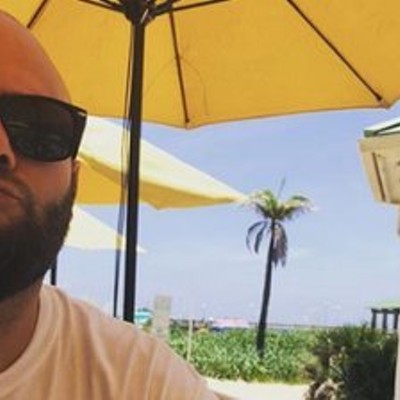It's been so bad at times that we've openly wondered if the fact that the Dolphins' stadium is built on a Tequesta Indian burial ground might have something to do with the team's failures. Listen: You can laugh, but we all watched Poltergeist as kids. America didn't question Boston Red Sox fans when they claimed their team was under the Curse of the Bambino for decades, and it's somehow universally accepted that a man and his goat cursed the Chicago Cubs to this day, so get down off your high horse and hear us out on this one.
We bring all this up because we can't decide if the Seminole Tribe of Florida paying a reported $250 million over 18 years for the right to name the stadium after their Hard Rock-owned casinos has us further shaken or relieved. We legitimately can't make heads or tails of what this means for the legend of the "Curse of the Tequesta." Is this the first step in improving relations to the point that the curse is lifted, or is this an ominous sign that the Seminole Tribe is taking measures to avenge the proud Tequestas?
Now, you might be saying to yourself, Outside of these both being Indian tribes, what do they really have in common? and to that I would remind you of this passage from the original New Times Tequesta Curse investigation.
A few months before the grand opening of the stadium, the Los Angeles Times wrote an article detailing the construction and unique funding of the Dolphins' new stadium. The article also mentions the burial site discovery:Oh, shit.
"Then there were the two acres that archaeologists claimed were an Indian burial ground more than 1,000 years ago. They said that the Tequesta Indians had used the site about 800 A.D., and the Seminole Indians in the mid-19th Century."
Did you catch that? Hard Rock stadium is built on old Seminole Tribe grounds as well. All this time, the Curse of the Tequesta has been the Curse of the Seminole too. The Dolphins built their land on top of Tequesta Indian burial grounds that were surrounded by Seminole tribe artifacts. The Dolphins were ordered to sift through the soil for Tequesta burial remains, but nobody ever considered that maybe the Seminoles were just as pissed we built a football stadium on top of their belongings. Now, with money largely earned from casino rakes, the Seminoles have stamped their name back on the land they once owned.
UPDATE: OH, SHIT. SEEMS BAD.
So, we ask again: Is it a good thing for the Curse of the Tequesta that the Seminole Tribe has paid the Miami Dolphins to put their name atop their once cherished land, or is this just the next level of the Curse of the Tequesta?











